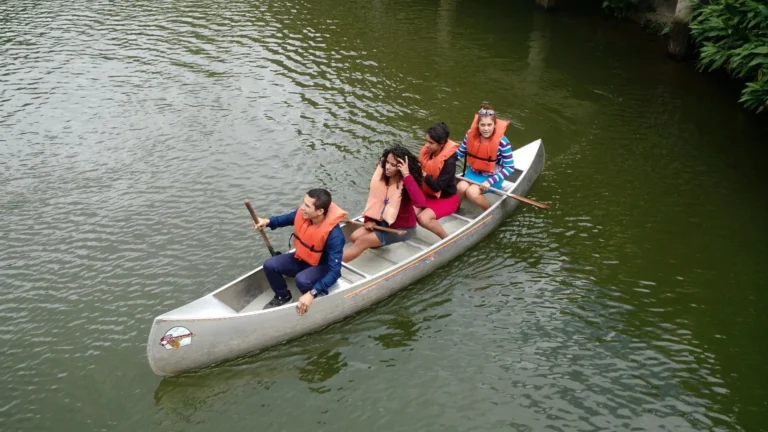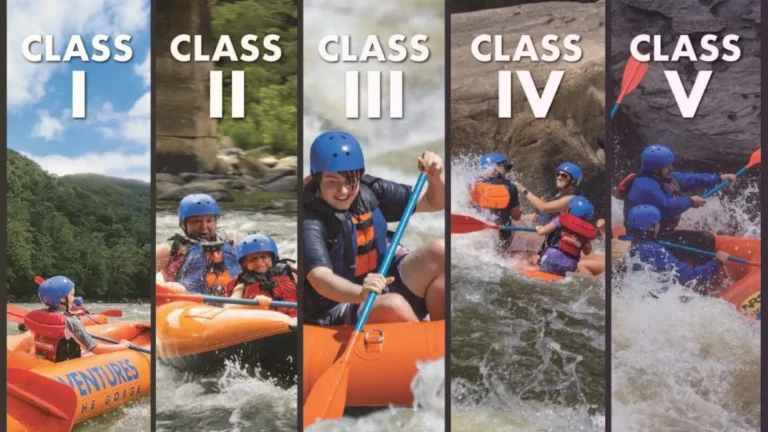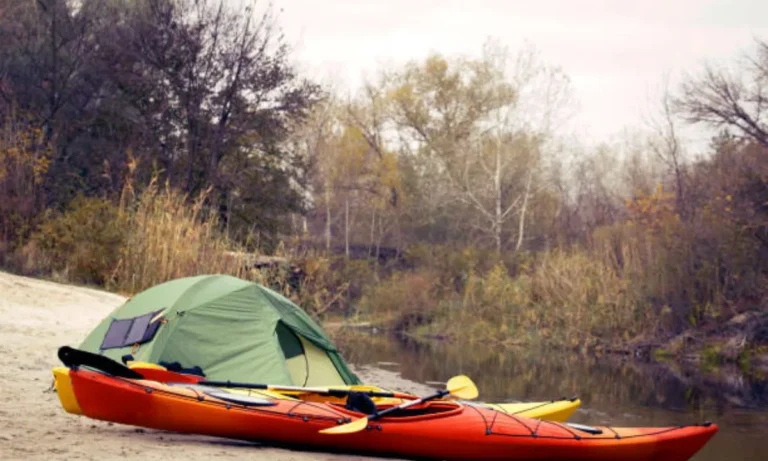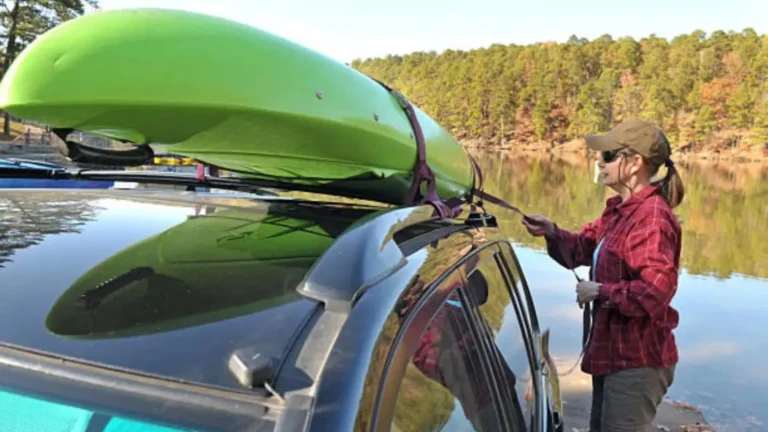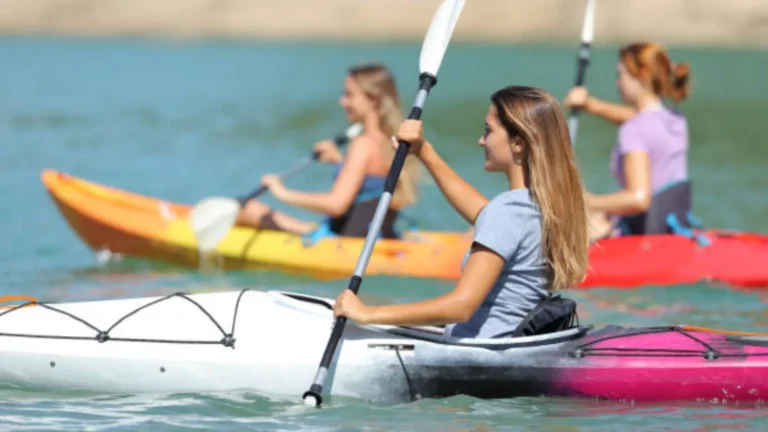How To Choose The Right Canoe Paddle
You need a Right Canoe Paddle to enjoy your time on the water. Different paddles have different features and feel different in your hands. You should try out many paddles and see what you like best. Some paddles are better for different things. “I ask customers, ‘Do you want a fast paddle, a strong paddle, or a cheap paddle?’” says Andrew Stern, who works at Bending Branches.
“Fast means a light paddle that helps you go far and fast. Strong means a tough paddle that can handle rocks and rapids. Cheap means you care more about the price than the quality. The more money you pay for a paddle, the lighter or stronger it is.”
This guide will help you choose the right paddle for you. The first thing you need to do is think about what kind of canoeing you do most. No one paddle works for everything. Paddles are made differently depending on what they are used for. The shape and size of the paddle blade, and the material and design of the paddle, affect how it performs.
The Right Canoe Paddle’s purpose
Flatwater And Tripping Paddles
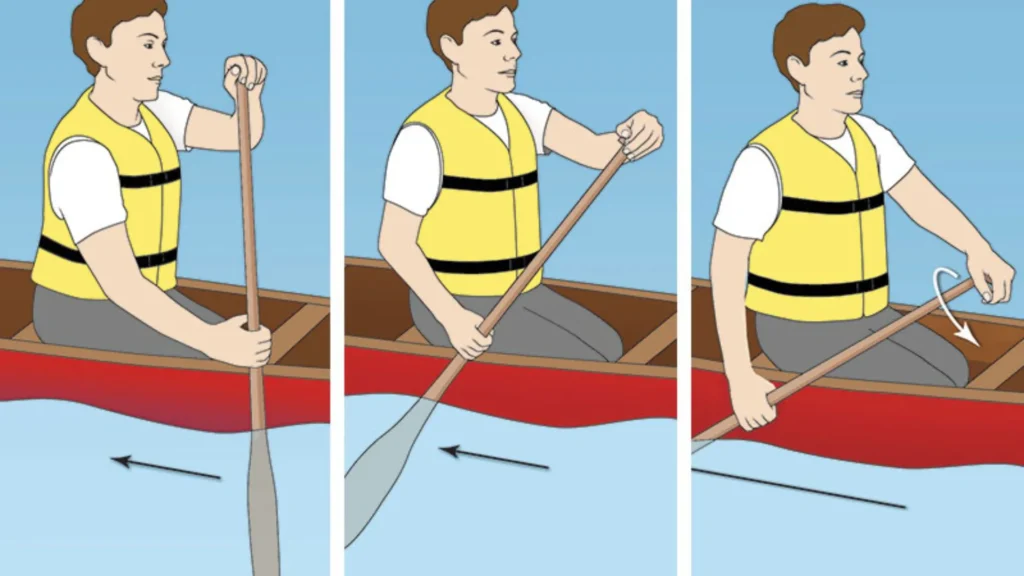
If you mainly paddle on flatwater lakes, choose an ottertail or beavertail blade shape. These have narrower blades that hold less water. This makes paddling less tiring on long trips.
The ottertail has a more pointed tip and is narrower. The beavertail has a rounder tip but is still relatively narrow.
Some paddlers doing long distances or wanting speed prefer a bent-shaft paddle.
“Bent paddles are more efficient than straight ones,” says Bending Branches’ Stern. “The bent shaft keeps the blade vertical longer, so you move more water with less effort.” But maneuvering is awkward with bent shafts.
Whitewater Canoe Paddles
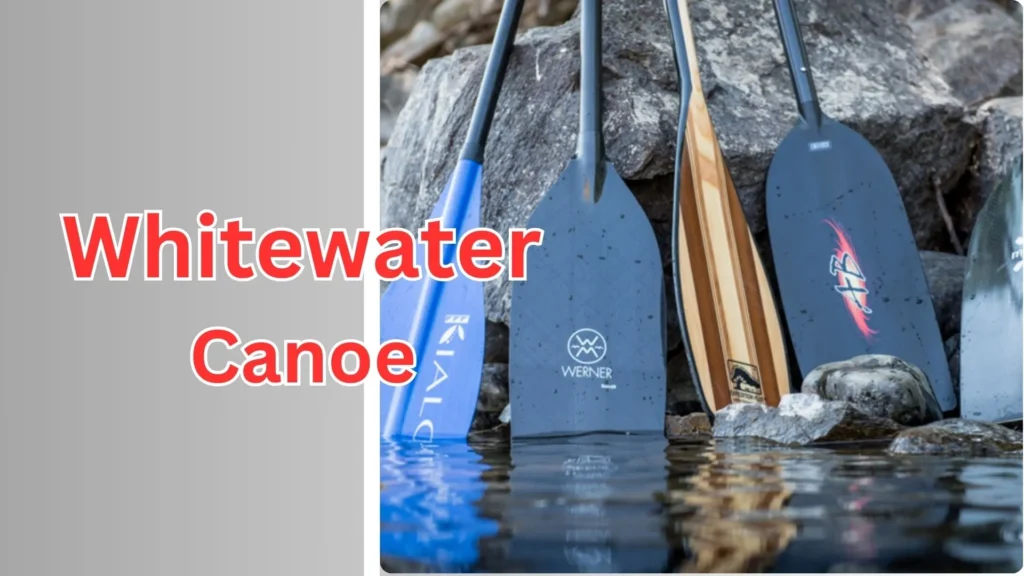
Paddles for whitewater have shorter, wider blades with square tips. This makes quick strokes and last-minute moves like draws and prices easier. Straight shafts are best for whitewater. They make key techniques like bracing much easier.
Many whitewater paddles have curved blades to grip the water better. Some paddlers on trips with both whitewater and flatwater bring two paddles – one for each type of water.
Solo Canoe Paddles
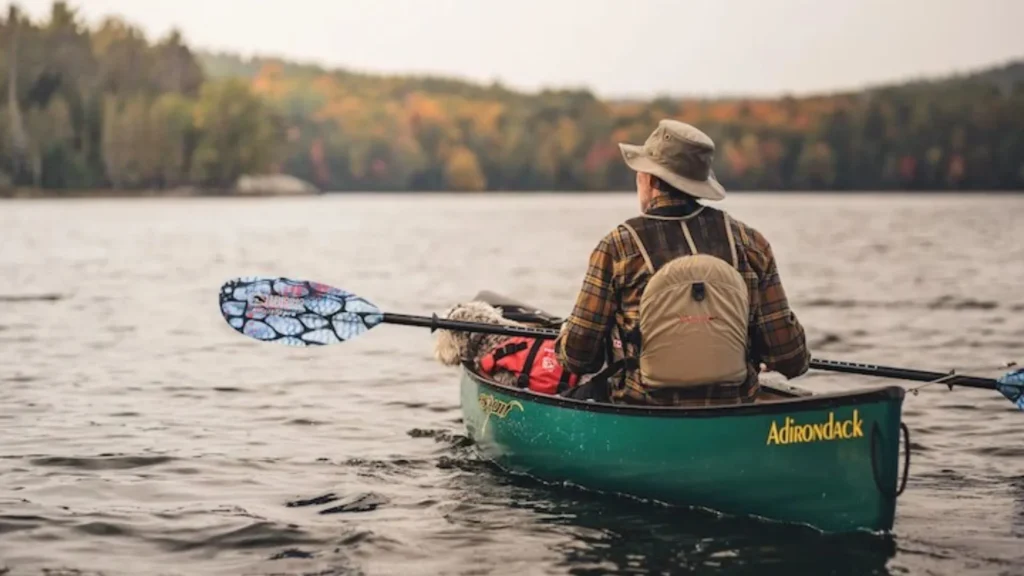
If you paddle a canoe solo, use a paddle with a long, narrow blade and short shaft. This gives more control over the water. The long blade stays in the water as you paddle. You recover the paddle underwater instead of lifting it out of the water. This allows for smooth, precise strokes.
Paddles designed this way help with control when paddling alone.
The short shaft is easier to maneuver. The underwater recovery keeps the paddle steadier.
Overall, the specialized design makes solo paddling easier. The paddle becomes an extension of your arm, allowing you to steer and power the canoe with ease.
Racing Canoe Paddles
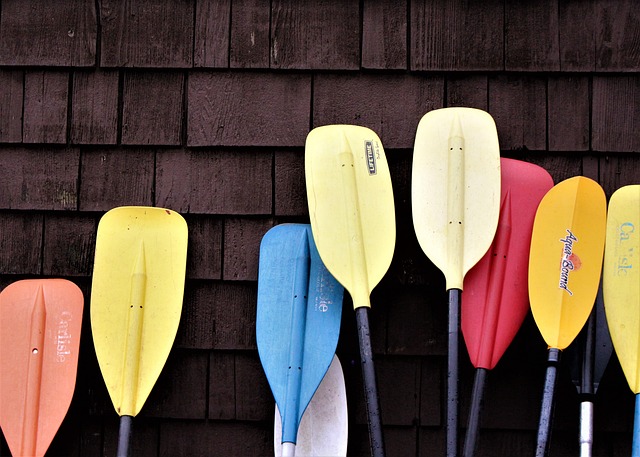
Racing canoe paddles often have a shorter and wider blade, like the Sugar Islet. This blade catches more water. Its strong shape allows faster stroking. Many racing paddlers also use bent shafts. These increase forward power and make each stroke more efficient.
Canoe paddle grips
Paddles usually have two main grip shapes – palm grip and T-grip. The palm grip is shaped like a teardrop. It fits nicely in the paddler’s hand. It’s good for long trips on flat water and casual paddling.
The T-grip has a longer straight part to wrap your hands around. It’s less comfortable but gives more control. T-grips are usually used on paddles for whitewater. Palm grips are usually used on paddles for flat water.
The palm grip is more comfortable for casual paddling. The T-grip gives more control and is used on whitewater paddles. The shape you choose depends on the type of paddling you do.
The Diameter Of The Shaft
The part of the paddle that you hold can have two shapes: like a circle or like an egg. Egg-shaped paddles are easier to grip when you move them in the water, but some circle-shaped paddles have a part that is egg-shaped too, so you can hold them better.
Canoe paddle materials
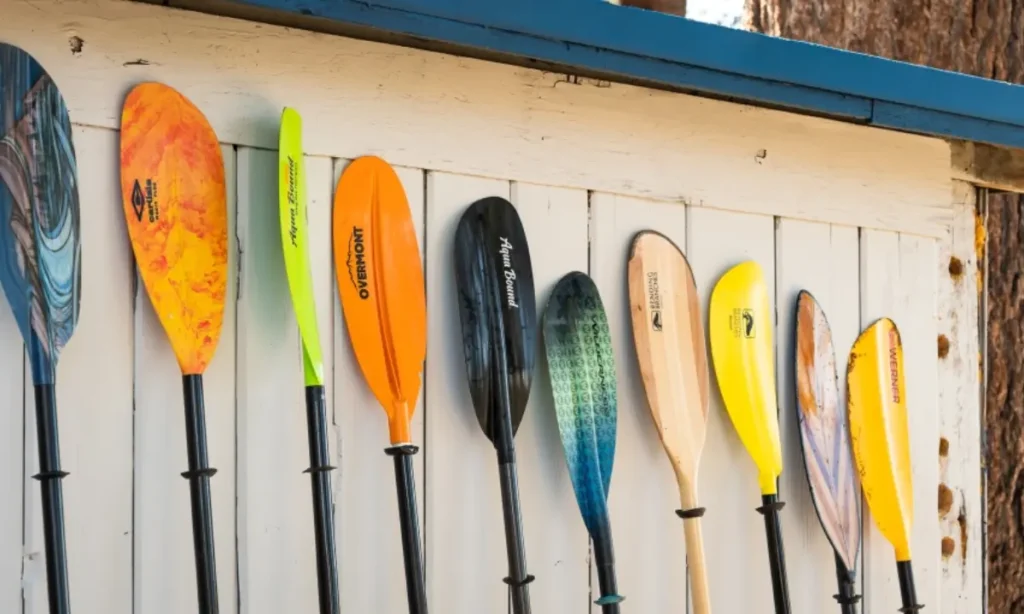
Wood paddles are classic, beautiful, and feel warm in cold weather. They’re most common for lake paddling. Wood needs some maintenance like occasional sanding and varnishing to prevent rot. Not all wood is the same. Ash is very durable for trips and rough conditions. Maple is also strong but more flexible. Cherry is popular – it’s durable yet lightweight.
Walnuts are stiff and heavier, also more expensive. Some paddles have fiberglass tips for protection in shallow or rocky waters. Laminated paddles use multiple woods together. You can tell because there are different colored woods side by side. Laminating combines the benefits of different woods.
Wooden Canoe Paddles
Canoe paddles made from carbon, aramid fiber, and fiberglass are very light and durable. They don’t need as much maintenance as wooden paddles. Carbon paddles are popular for racing. The more carbon fiber in the paddle, the higher the cost. Carbon makes the paddle lightweight but stiff with less flex.
Composite materials like carbon fiber and fiberglass have advantages over wood:
- Lightweight – Easier to use for long periods
- Strong – Don’t break or splinter as easily
- Low maintenance – Don’t need varnish or repairs as often
- Stiff – Give powerful strokes for racing
The downside is composite paddles cost more than wood. But they last longer with little upkeep. For serious paddlers, the benefits outweigh the higher initial cost.
Composite Materials
Aramid, Fibreglass And Carbon Canoe Paddles
Most plastic canoe paddles have a plastic blade and aluminum handle. Plastic paddles are sturdy and need no maintenance. The aluminum shaft may be less comfortable to grip on cold days than wood. Plastic paddles are heavier than other types. They can be less efficient and have simpler designs. But they work well as a spare on long trips or for occasional cottage canoeing.
How to size a canoe paddle
You might love a canoe paddle that is good for the type of canoeing you like. But if it is not the right fit for you, it does not matter how nice it looks. A paddle that is too big or small will make you feel bad and slow on the water and you might not use it much. We have some ways to help you find the best canoe paddle size for you.
The best paddle size for you depends on the canoe you use and how you sit in it. It is better if you can try the paddle on the water in your canoe, but if you can’t do that we have some other ways for you too.
Having the wrong size paddle is uncomfortable and hard to use. Here are some ways to get the right size:
- Kneel on the ground in a store. Hold the paddle straight down. If your arm is straight out, it’s the right size.
- Sit in your canoe. Measure from your nose to the water. That distance should equal the grip on the paddle neck.
- Paddle a broomstick in your canoe. The dry part equals the right paddle length for you.
- Sit in a chair. Measure chair to eyebrows. That’s a good paddle length.
Main points:
- Wrong size paddle is inefficient and uncomfortable
- Test in-store by kneeling with paddle straight down
- Sit in the canoe, measure nose to water = grip to neck
- Paddle broomstick, dry part = right length
- Sit in a chair, and measure to eyebrows for length
Extra tips about your paddle
Store Your Canoe Paddle Properly
You can look on the internet for ways to make a simple place to put your paddle, or you can just lay it down in your home or car place. Do not let the sun hit it and keep it in a place that is not wet when it is cold time, so the water does not go in the wood. Do not forget that keeping your canoe good is as important as keeping your paddle good.
Pack An Extra
You might leave your paddle in the plants when you carry your canoe, or it might go away with the water when it gets higher at night. It is easy to lose your paddle.
If you are going on a long canoe trip, bring another paddle with you. It will make you and your friends happy because they will not have to paddle for you.
Make Use Of Hockey Socks For Wooden Paddles
When you go on a canoe trip, put a hockey sock on the end of your paddle when you carry it or when you stop. This will keep your wooden paddle from getting damaged and keep it looking nice. Some people have their paddles for a long time if they take good care of them. Don’t buy a paddle just because it is cheap. A good paddle that suits your canoeing and is comfortable to use is worth the money.

